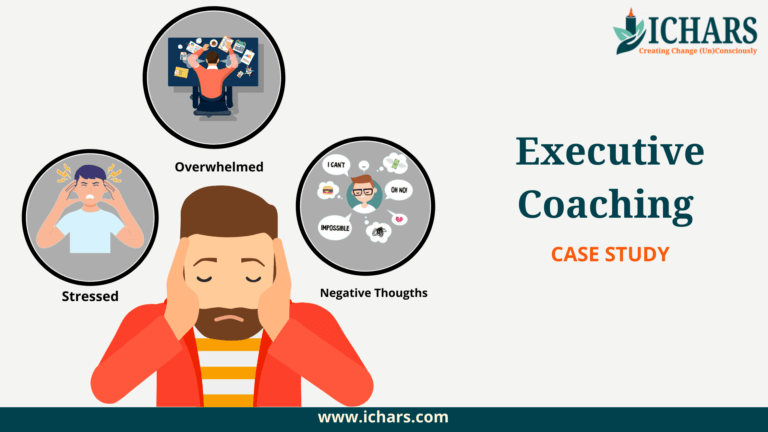Recently, I received a call from Jay (name changed) who was feeling stressed, overwhelmed and weighed down because of his commitments in life. He was wondering whether coaching can help him. After having an initial conversation over the phone, we planned for a consultation session.
Jay had already shared his challenge, so I asked him to describe his challenge a little more during executive coaching.
Jay: I have been experiencing increasing feelings of being stressed, overwhelmed and weighed down by my commitments in life. I have been particularly concerned about my negative thoughts and attitude at work and at home and I really would like to change this. I got married three years back and have a one-year-old toddler. I am a journalist and have been working for the last 5 years and have recently enrolled in a part-time Master’s Program. My wife is a nurse and together, the both of us work shift-work in order to look after the baby.
I really enjoy my job but it is demanding and physically tiring at times. I have previously enjoyed my studies but you know, now I find it difficult to finish the work with the responsibilities of a small baby and work. For financial reasons, I was not able to complete my studies full-time. I find myself to be snappy, irritable, exhausted and unmotivated at home and at work in the last couple of months. I have also noticed that my relationship with my wife has become strained and I have begun to resent her for asking me to complete even minor chores around the home. I just feel unloved and taken for granted by my wife!
Executive Coaching – Complete Session Flow
Initial Consultation Session
As always in the first consultation session, after hearing Jay’s challenges, I began by psycho-educating Jay about the core concepts behind the process I follow. I suggested Cognitive Hypnotic Psychotherapy (which is an eclectic approach to Psychotherapy). Then I walked him through the pre-coaching process.
After helping him understand the executive coaching process, I added that in his case, once we have defined the current problem and outcome clearly, I will help him-
- Defining the Existing problem clearly
- Defining the expected outcome from the sessions clearly
- Understanding the kind of future, he would like to create for himself
- Understanding the different tasks he is currently required to do and assessing how they are related to the desired future
- Identifying the specific thoughts and emotions he has with respect to each of the tasks
- Identifying the various triggers where he is irritable and snappy
- Creating a planner to help him manage his time and do the required tasks more effectively
- Restructuring the thoughts and reconditioning the emotions that are bothering him or stopping him from being able to do the required tasks effectively
Session 1: Defining Challenge and Desired Outcome
In the first session of executive coaching, I used the SOFT SEA Coaching*1 Framework in combination with Meta Model*2 Question for helping Jay define his current situation, desired outcome, and expected future.
I asked Jay to summarize the current challenge he was facing and wanted to overcome via therapy in his own words.
Jay: I feel exhausted, overwhelmed and to some extent lost about my life when I look at all the things that I need to do and all the roles I have to play.
I asked Jay to reframe his problem statement using the following format:
I feel ………… about ………… when …………
Jay:
I feel overwhelmed about my life when I look at all the things that I need to do and the roles that I have to play.
I asked Jay to read the statement a couple of times and tell me what was the desired outcome that he wanted to achieve at the end of these sessions in the format
I wish ……………………….
Jay: I wish to be able to feel calm and confident about my ability to manage and complete the things that I need to do.
I asked Jay to describe the dream future that he would love to work towards?
Jay said that he has never thought about the future in detail.
I asked him to think about his dream future during the session and describe what that would be like.
Jay, with some difficulty, began describing the desired future. In Jay’s description, there was more reference to what he would not want or the problems that he wouldn’t have.
For each such reference, I asked Jay, if not this then what?
Gradually Jay was able to describe the desired future a bit more clearly and with more specific observable details.
I asked Jay to list down all the triggers where he felt snappy and irritable and also to narrate the specific thoughts he has in mind with each trigger.
For the home assignment, I asked Jay to continue the list.
Session 2: Working with Task List and Hindrances
We began session 2 in the next week by asking him about the week and any changes that he noticed in his behaviours, thoughts, or emotions. Jay mentioned that while he was writing about the future, he actually started believing that it was possible to achieve that, which seemed almost impossible before executive coaching.
As I had asked him to do some homework, I was going through it wherein he described the following:
- He is able to feel calm while managing and completing his professional work.
- He is able to confidently appear for his master’s degree
- He is having a fulfilling relationship with his wife
- He is able to take good care of their toddler and is a good father
As I asked him to list down the triggers and thoughts when he felt snappy and irritable, I used Thought restructuring with him to help him change his thoughts associated with the identified triggers.
I explained to him how would the new thoughts become more automatic, by giving him the following example :
What comes to your mind immediately when you hear hare rama?
Jay replied Hare Krishna
To which I said this is how the new automatic thought would work.
I asked to practice the thought restructuring technique*3 daily to make the new thoughts more automatic.
Further, I asked Jay to make a list of the things that he was required to do currently.
Once Jay listed all the activities, I asked him to prioritize and schedule each of these activities. I also asked him to identify the specific thoughts or emotions that he felt with respect to each of these activities.
Session 3: Working with Task List and Hindrances Cont…
In the third session, Jay reported that he had started feeling better in the past week. I said he realized that making a list and prioritizing all his work made him work more effectively.
As I was going through his home assignment, Jay had made a list of those specific thoughts and emotions that he felt with respect to each of these activities.

I did the thought restructuring process with him, where I taught him,
When = trigger
Then = New thought
I observed that the most frequent emotion that Jay wanted to feel was Energetic.
I asked him to tell me 1 situation from the past where he felt most energetic and pick up 3 situations from the list where he would like to immediately feel energetic.
Once Jay told me the 3 future situations, I did the NLP anchoring technique*4 with him. At the end of the session, Jay looked quite happy.
Session 4: Future Pacing
In the fourth session, Jay told me he actually started feeling energetic while doing those tasks.
With the help of a hypnotic process*5, I took Jay into a deep relaxed state and asked him to imagine how the activities he is doing now are eventually helping him create his desired future.
I then installed another anchor with his other desired emotions.
Jay took 8 sessions and felt more in control of his life and confident about managing the activities. Jay stayed in touch with me over the phone for another 4 weeks reporting his feelings and progress.
My Observation:
Imagination can play a very important role in therapy but the counselor needs to be skilled to understand which imagination process should be used in what context.
References for techniques used
The concepts and techniques discussed during this case study are based on the topics covered during the Cognitive Hypnotic Coaching® Diploma and the Cognitive Hypnotic Psychotherapy™ Diploma Program.

